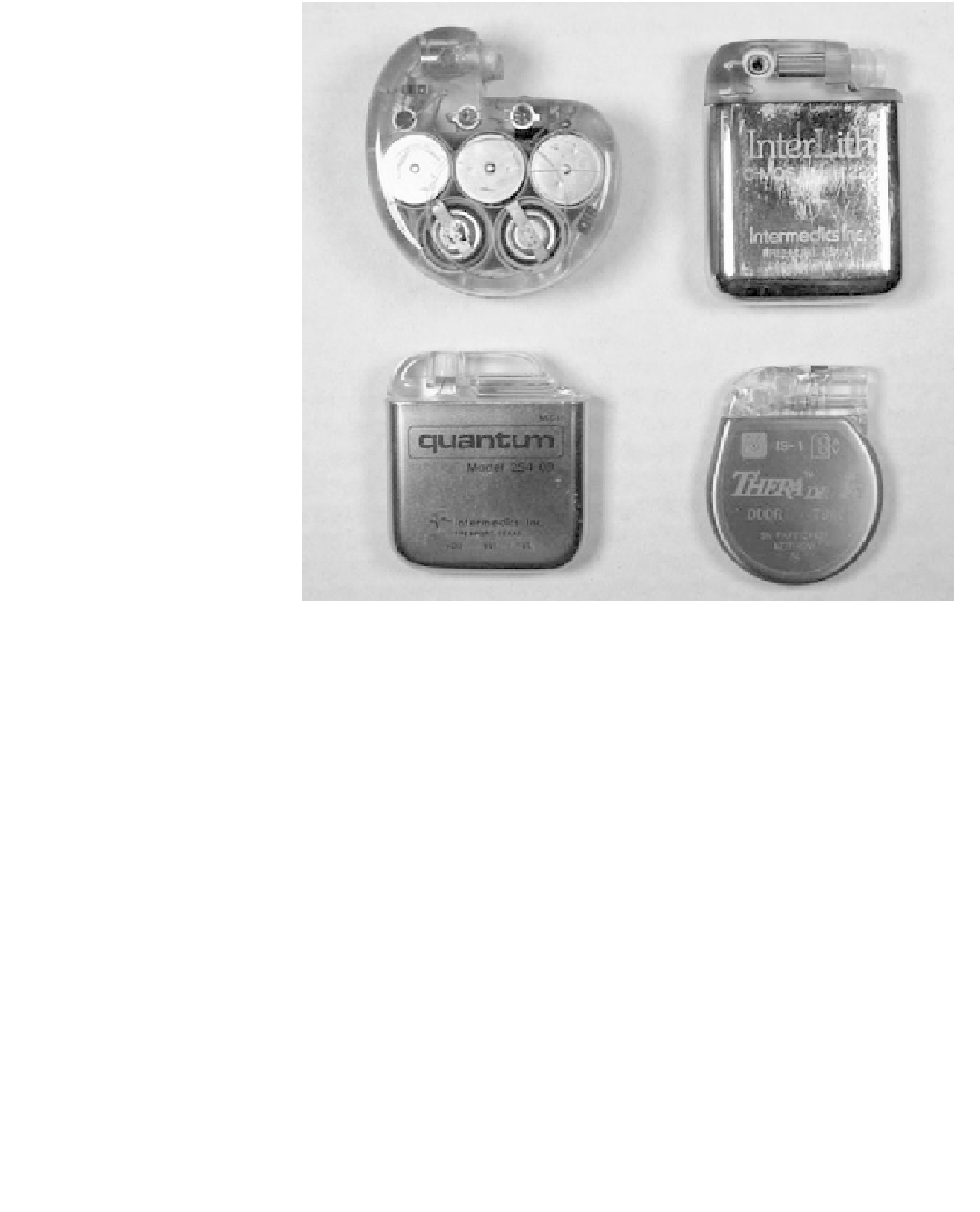Biomedical Engineering Reference
In-Depth Information
Figure 8.8
Evolution of implantable pacemakers. Top, left to right: Very early CCC VOO pace-
maker powered by six mercury cells, Intermedics InterLith VVI with CMOS circuitry and powered
by a lithium cell. Bottom: Intermedics “Quantum” programmable VVI/VVT pacemaker, a modern
Medtronic Thera DDDR pacemaker.
Regardless of the programming method, the most convenient time for the microprocessor
to read and update parameter settings is during the refractory period. Within that period, the
microprocessor is free to modify timeouts and/or recon
gure the stimulation and sensing cir-
cuits. Obviously, RF communication with an implantable device is more demanding than
polling a few switches in a temporary external pacemaker. The RF link requires the imple-
mentation of a hardware and software communications protocol between the implantable
device's microprocessor and the microprocessor of a PC-like computer. In addition, modern
programmers run graphical user interface (GUI) software to ease the programming of sophis-
ticated devices by physicians and other medical personnel.
Since the circuitry of modern implantable devices is almost always encapsulated within
a titanium case, communications is almost always achieved through a magnetically cou-
pled link operating in the sub-100-kHz spectrum. This is a strong limiting factor to the data
throughput through of the link. However, speed is not usually critical for programming
operations, since the usual parameter set of an implantable pacemaker does not require the
exchange of more than a few bytes per cardiac cycle, and at least 100 ms of the refractory
period is available on each beat. Although communications speed is not a major constraint,
the reliability of the protocol is of utmost importance. Communications protocols for
implantable devices are usually designed with 100% redundance to ensure that the param-
eters selected by the physician are received and accepted correctly by the implantable
device's microprocessor.
fi


Search WWH ::

Custom Search